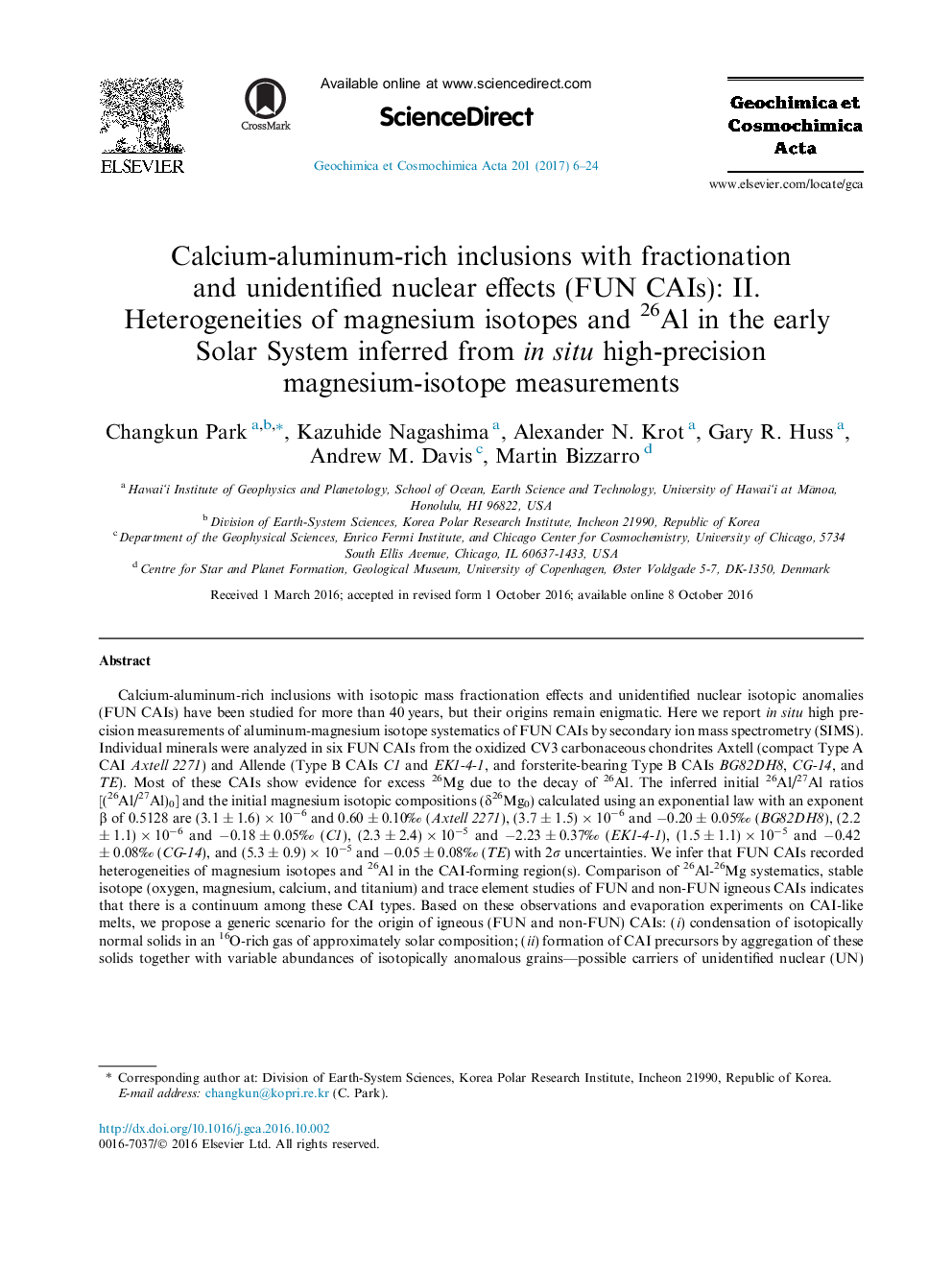| Article ID | Journal | Published Year | Pages | File Type |
|---|---|---|---|---|
| 5783459 | Geochimica et Cosmochimica Acta | 2017 | 19 Pages |
Abstract
Calcium-aluminum-rich inclusions with isotopic mass fractionation effects and unidentified nuclear isotopic anomalies (FUN CAIs) have been studied for more than 40 years, but their origins remain enigmatic. Here we report in situ high precision measurements of aluminum-magnesium isotope systematics of FUN CAIs by secondary ion mass spectrometry (SIMS). Individual minerals were analyzed in six FUN CAIs from the oxidized CV3 carbonaceous chondrites Axtell (compact Type A CAI Axtell 2271) and Allende (Type B CAIs C1 and EK1-4-1, and forsterite-bearing Type B CAIs BG82DH8, CG-14, and TE). Most of these CAIs show evidence for excess 26Mg due to the decay of 26Al. The inferred initial 26Al/27Al ratios [(26Al/27Al)0] and the initial magnesium isotopic compositions (δ26Mg0) calculated using an exponential law with an exponent β of 0.5128 are (3.1 ± 1.6) Ã 10â6 and 0.60 ± 0.10â° (Axtell 2271), (3.7 ± 1.5) Ã 10â6 and â0.20 ± 0.05â° (BG82DH8), (2.2 ± 1.1) Ã 10â6 and â0.18 ± 0.05â° (C1), (2.3 ± 2.4) Ã 10â5 and â2.23 ± 0.37â° (EK1-4-1), (1.5 ± 1.1) Ã 10â5 and â0.42 ± 0.08â° (CG-14), and (5.3 ± 0.9) Ã 10â5 and â0.05 ± 0.08â° (TE) with 2Ï uncertainties. We infer that FUN CAIs recorded heterogeneities of magnesium isotopes and 26Al in the CAI-forming region(s). Comparison of 26Al-26Mg systematics, stable isotope (oxygen, magnesium, calcium, and titanium) and trace element studies of FUN and non-FUN igneous CAIs indicates that there is a continuum among these CAI types. Based on these observations and evaporation experiments on CAI-like melts, we propose a generic scenario for the origin of igneous (FUN and non-FUN) CAIs: (i) condensation of isotopically normal solids in an 16O-rich gas of approximately solar composition; (ii) formation of CAI precursors by aggregation of these solids together with variable abundances of isotopically anomalous grains-possible carriers of unidentified nuclear (UN) effects; and (iii) melt evaporation of these precursors accompanied by crystallization under different temperatures and gas pressures, leading to the observed variations in mass-dependent isotopic fractionation (F) effects.
Related Topics
Physical Sciences and Engineering
Earth and Planetary Sciences
Geochemistry and Petrology
Authors
Changkun Park, Kazuhide Nagashima, Alexander N. Krot, Gary R. Huss, Andrew M. Davis, Martin Bizzarro,
